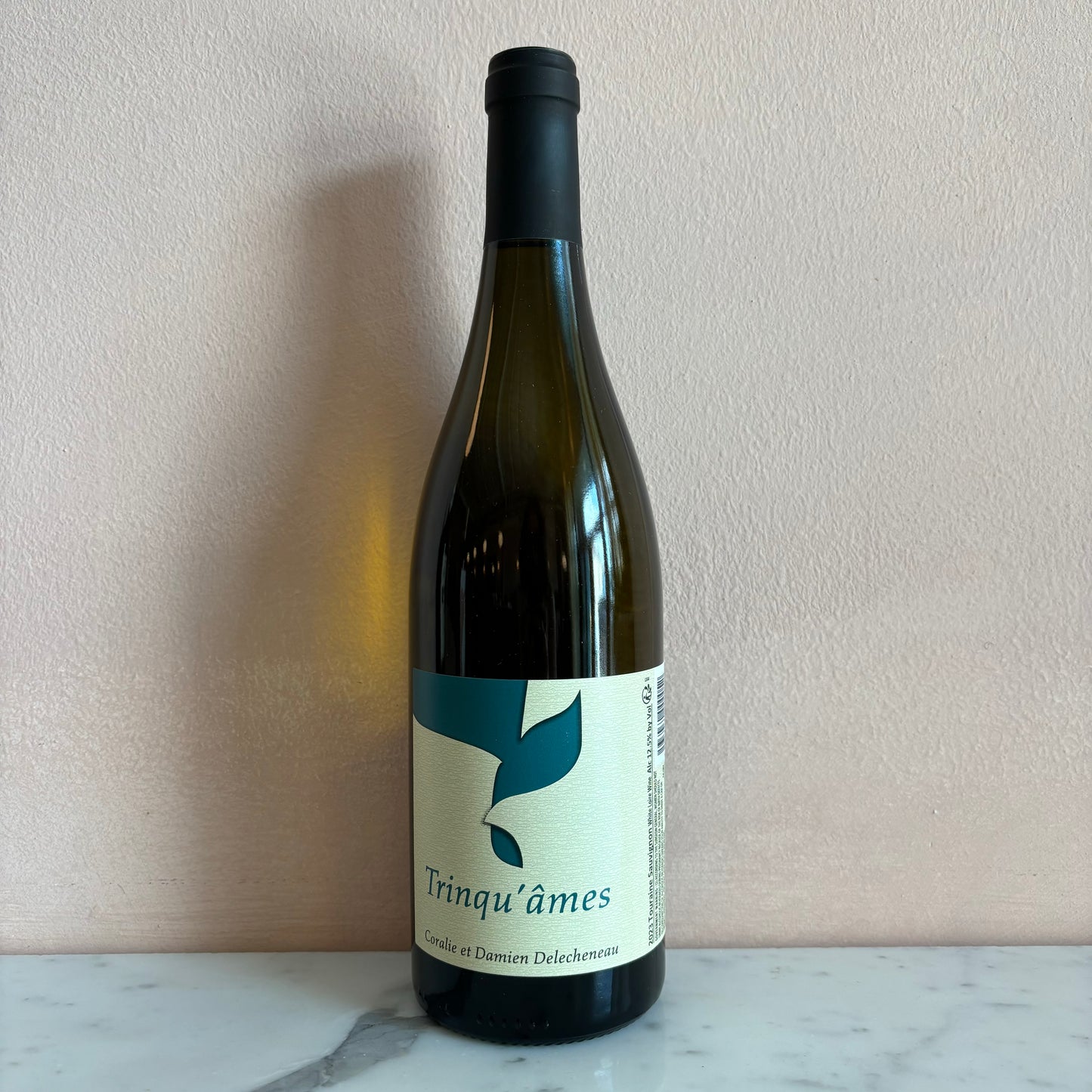Coralie et Damien Delecheneau
Coralie et Damien Delecheneau "Trinquames" Loire Valley, France 2023
Coralie et Damien Delecheneau "Trinquames" Loire Valley, France 2023
Low stock
Couldn't load pickup availability
FROM JENNY & FRANÇOIS
THE WINE: 100% Sauvignon Blanc. Fermented with indigenous yeasts in concrete and fiberglass tanks. Elevage on fine lees for 4-5 months.
THE PRODUCER:
“It could be a bird, a leaf, a plant… all of these things, really,” Coralie Delecheneau casts a loving, enigmatic smile on the La Grange Tiphaine sign hanging in their tasting room when asked about the meaning of their logo. “The main symbolism here is that Damien and I added our own contribution to the image of the parchment sheet that traditionally featured on the label of Grange Tiphaine wines.” It is a fitting metaphor indeed – the couple definitely left their mark after taking over the historical family estate, founded by Alphonse Delecheneau as a mixed farm at the end of the 19th century. Not only did they make the decision to focus solely on wine production, they also doubled their vineyard surface and started a négociant project (more on that later).
Their range has something for everybody: there are methode ancestrale pet-nats in both colors, vivid and authentic; diverse styles of whites from dry to sweet yet refreshing botrytic ones, courtesy of the successive picks and sorting of their Chenin grapes; reds from juicy to age-worthy vieilles vignes from the aforementioned old Cot. Their flagship cuvées called Clef de Sol – French for “treble key”, showing the couple’s passion for music, but also a pun on the literal meaning “key to the soil” – truly represent their signature terroirs in both red (Touraine) and white (Montlouis). Their natural acidity also offers a wonderful aging potential, as the magnums of 2011, 2013 and 2015 generously shared with us over lunch show – no signs of fatigue, just salty mineral sap and gentle tannins, confirming Coralie’s assertion that “all our wines age well”.
In 2011, the couple started a négociant label “Coralie & Damien Delecheneau”, under which they produce succulent, easy-drinking and well-priced wines like Trinqu’ames, Tournage Riant or AdLibitum. Made from locally typical grapes like Sauvignon, Grolleau or Cab Franc, they are sourced from Grange’s own sites or from local growers working in long-term partnership with Damien. Supporting these farmers in the transition towards organic viticulture is one of the motivations of the project; the other is the fact that the Loire Valley is unfortunately no stranger to spring frosts. As the “tour anti gel” (wind turbine) in the middle of Grange’s old vineyard or the impressive wall of anti-frost candles in the tractor shed nearby quickly reminds you, disaster here looms more often than not. “We had 6 frosts in the past decade,” Coralie counts, and recalls how they manage to partly save some of the more recent vintages by the use of helicopters, advocated by her husband. More often than not, however, the freezing temperatures of late spring are quite devastating to the yield, and having this extra security of purchased fruit farmed according to Delecheneau’s guidelines and harvested by their own crew comes very much in handy. All the wines, regardless of whether domaine or négoce, are processed in Tiphaine’s winery and receive a very similar, simple treatment – gentle slow pneumatic press, overnight settling (débourbage) in concrete tanks, then fermentation and aging in concrete, clay or neutral oak barrels in the underground cellar, with the time and type of vessel depending on the wine. The whole structure is smartly designed on several levels in order to avoid pumping, which would oxidize and damage the wine, and everything is moved around by gravity. “Be it Trinqu’ames [well-priced négoce white] or Les Épinays [single-vineyard Chenin from a top-notch plot, one of Damien’s crown jewels], we do the same work, apply the same rules in the winery,” Coralie emphasizes solemnly, “there’s no way we would have super good wine in the higher-price range and average wine on the lower end. We’re not cheating, there’s the same amount of love in each cuvée. Our aim is to have fair wines.” Openness, consistency, neat work and dedication to community… these are veryfair wines indeed. And delicious, above all.

